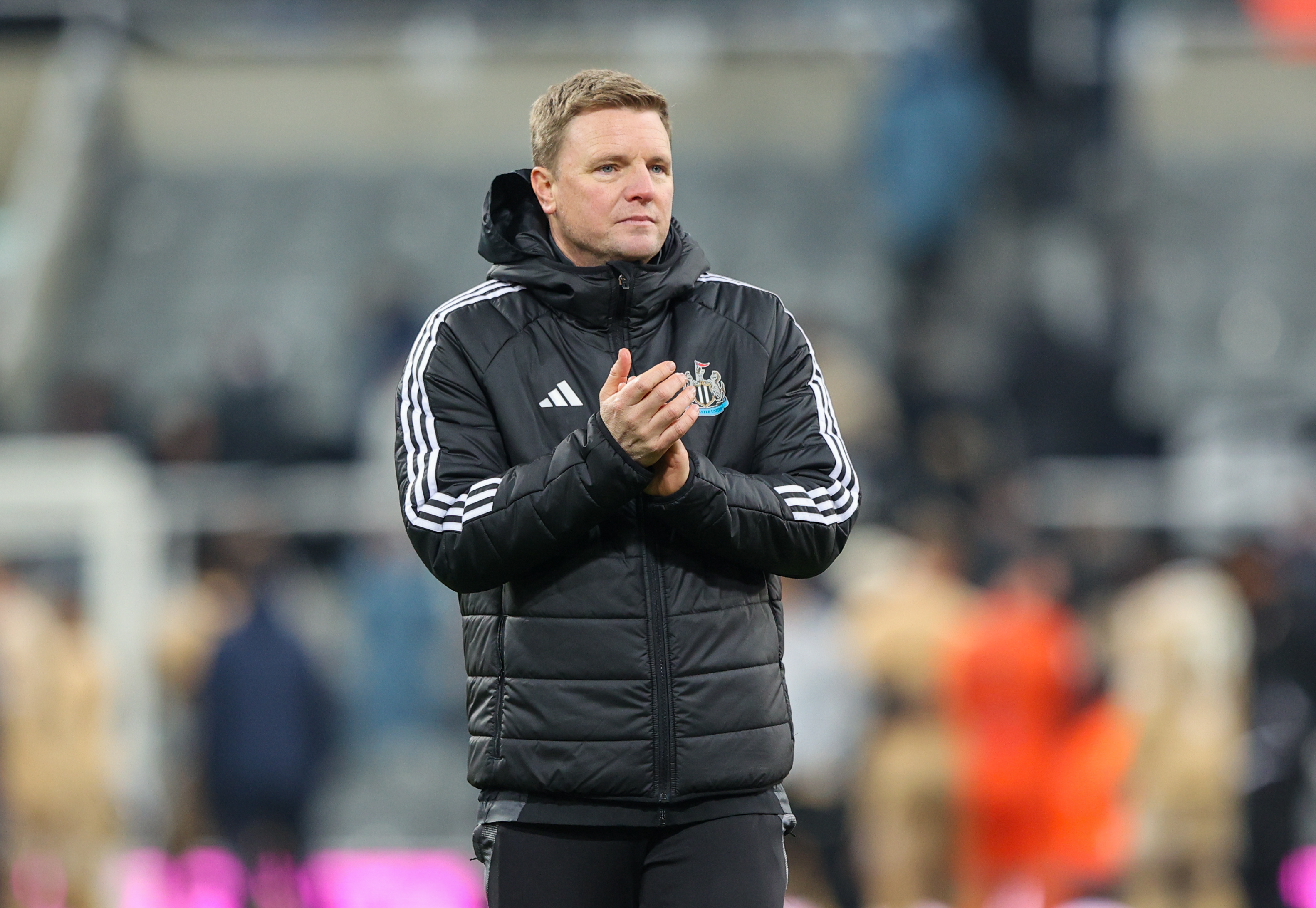The 12 best Chelsea kits of all time
They may be the Blues, but the boys from the bridge have had a varied colour scheme down the years, discovers Louis Massarella…
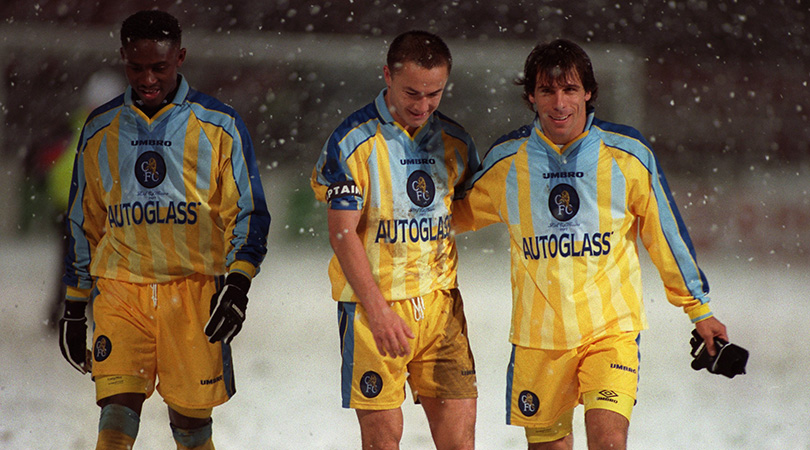
Home, 1984-85
Fittingly given France had just swaggered to victory at Euro ’84, Chelsea marked their return to the top flight, inspired by a batch of exciting youngsters including Pat Nevin, Kerry Dixon and Nigel Spackman, with a certain joie de vivre, courtesy of this Le Coque Sportif-made masterpiece (although to be fair, they had worn it the season before with Gulf Air across the front, see below).
It’s all about horizontal lines, not least the red trim on the shorts. As hot as Chelsea’s attack, who fired them to sixth place and a League Cup semi-final.
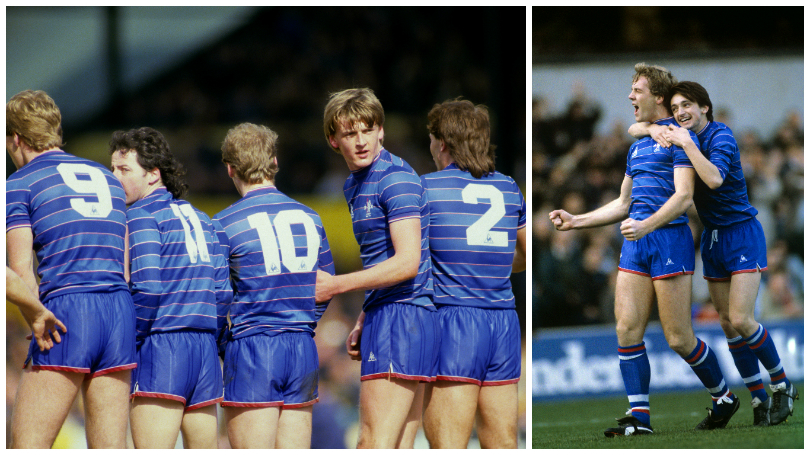
Away, 2013-14
With club in transition (again) during the first season of Jose Mourinho’s second season in charge, this classy white offering was the most eye-pleasing player on show – and the best of the Blues’ Samsung era (2006-15) changed strips.
Worn to mark 50 years of a one-off friendly against Eusebio’s Benfica when they donned something remarkably similar? Unconfirmed, but both hit the spot, with red, blue and stripes in all the right places.
Home, 1975-77
Get FourFourTwo Newsletter
The best features, fun and footballing quizzes, straight to your inbox every week.
Stamford Bridge in the mid-’70s was a depressing place to be, dominated by debt, hooliganism and relegation. Thank goodness for Ray Wilkins.
Oozing perma-tanned, huge-collared cool, the young midfielder became the club’s youngest-ever captain, leading them to promotion in 1977 wearing this era-defining kit. Strangely sexy given its evident itchiness and complete lack of thrills, a testament to Butch’s effortless sense of style.
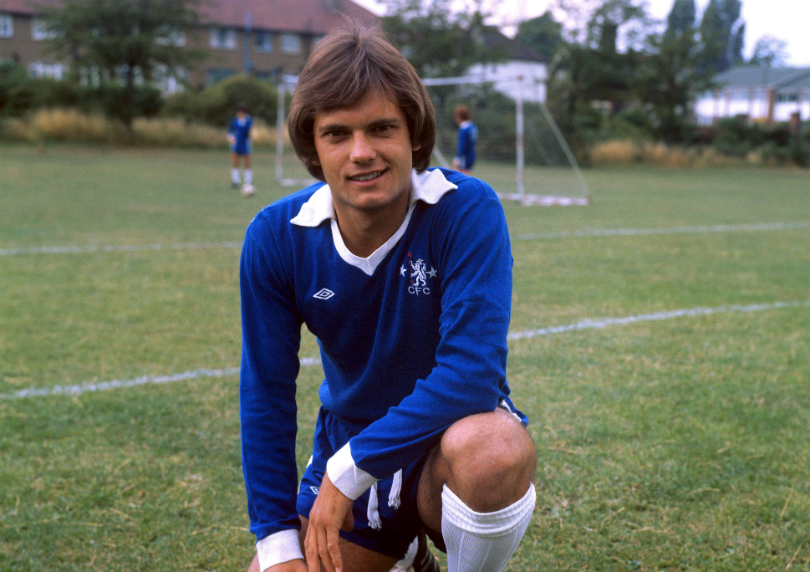
FA Cup Final (and replay), 1970
As brutal as it was brilliant, the 1970 FA Cup Final was a classic – and Chopper Harris et al wore a kit to match. For the replay against Don Revie’s Leeds United at Old Trafford, Dave Sexton’s side went one better, swapping white for mustard-yellow on their shorts, badge and socks – Leeds had worn blue socks in the first game – and adding blue stripes to the latter just for good measure. Peter Osgood’s did it justice with an equalising diving header.
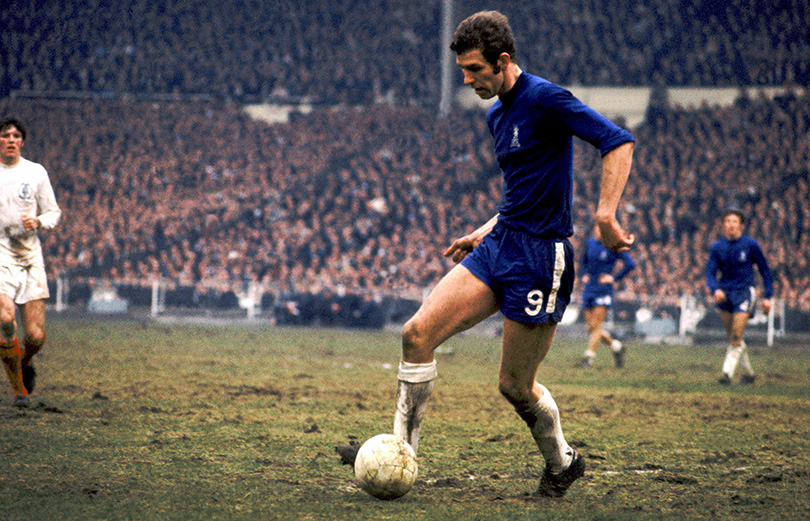
Away, 1992-94
Long before he emigrated to Canada to become a priest, Gavin Peacock was among the Chelsea stars to look splendid in this change strip, despite the presence of the collar laces that had made a curious comeback at the time.
The Blues had flirted intermittently with red and white as their road-trip combo since before World War One and finally came up trumps after some Jackson Pollock-esque efforts in the late ’80s. Particular credit to the vertical red stripes. Smart.
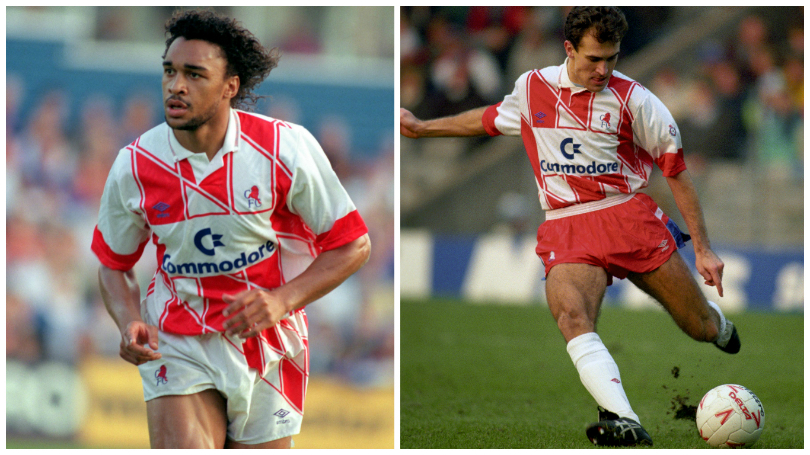
Home, 2012-13
The kit Chelsea won the Europa League in looked particularly good on Frank Lampard, whose dedication to keeping fit meant he carried off this tight-fitting number with aplomb. A pleasing round neck, ‘dirty’ white stripes, lettering, and logos and not a dash of red in sight. The best of the past decade in FourFourTwo’s opinion, especially fetching in toned, short-sleeve wearers like Lamps.
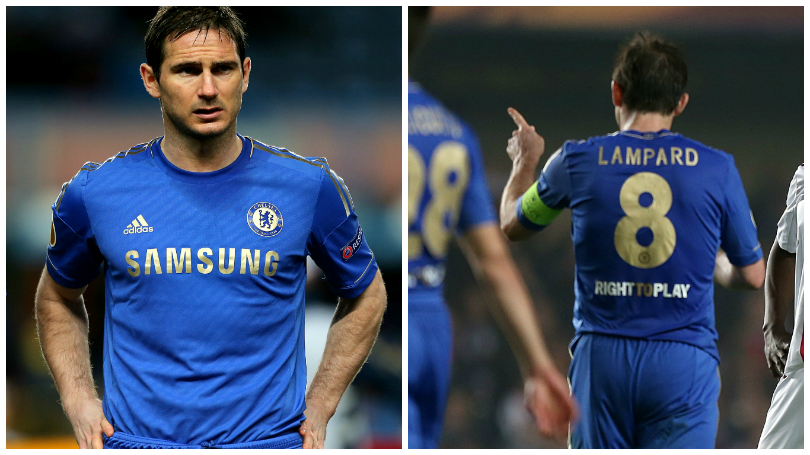
Away, 1997-98
The break-up sex of football kits. Chelsea knew they were too good for a domestic shirt sponsor and, indeed, lairy yellow with a multitude of blue stripes as an away strip – something they proved by winning the League Cup and Cup Winners Cup, before finishing third in the league the following season – but somehow they’d become strangely attached. Besides, this is the kit we picture Gianfranco Zola in during his pomp, and he was voted Chelsea’s Greatest Ever Player.
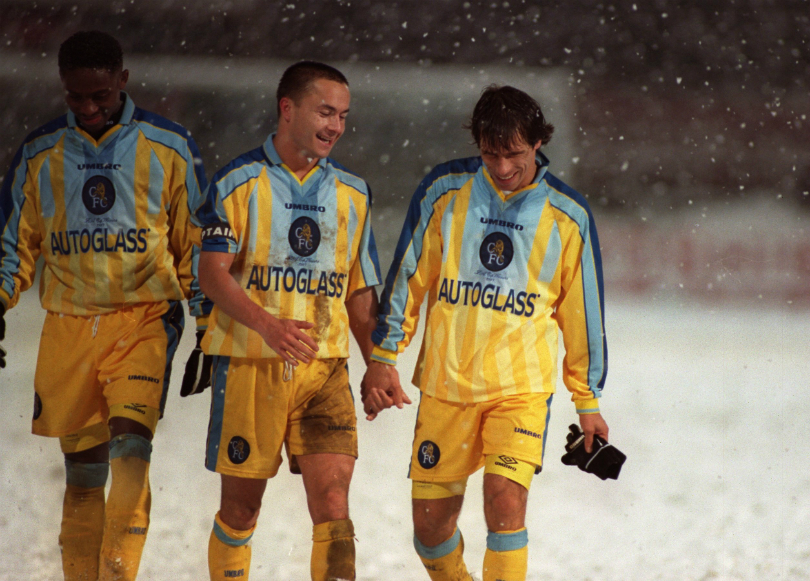
Home, 1930s
The 1930s were a time of struggle and clubs simply couldn’t afford to change kits as often as they did underpants. In fact, Chelsea’s barely altered at all during the decade, but it didn’t need to.
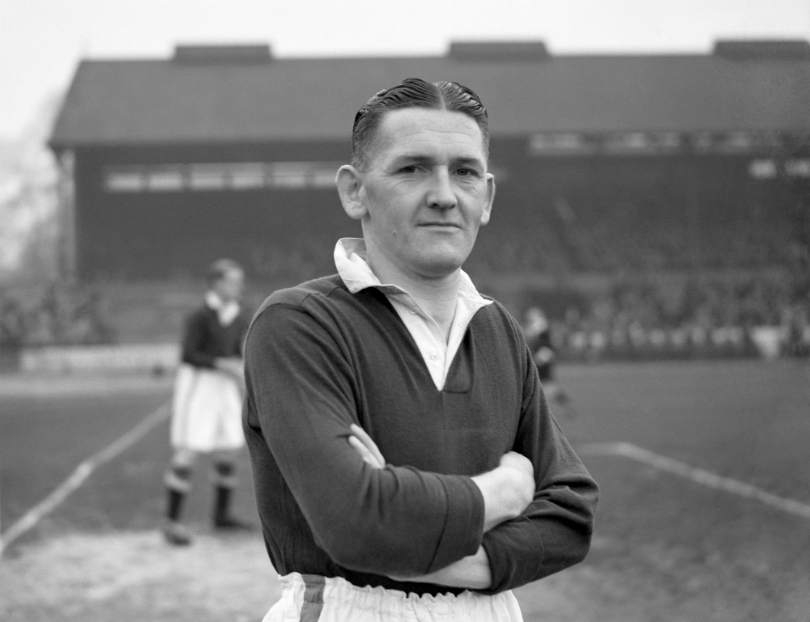
This was classic ’30s fare, with big shorts, block colours and proud collars. Amid such posterity and conservatism, the Blues struggled on the pitch too, clinging on to their top-flight status after promotion in 1930. On and off the pitch, the gloom was lifted slightly by Hughie Gallacher; a little past his best, the legendary Scot banged them in and knocked them back with equal aplomb.
Home, 1995-97
Not old enough to qualify as ‘retro’ and not recent enough to be considered stylish, ’90s kits are a bit of a no-man’s land when picking cool kits. But few Chelsea fans will forget the strip their team wore when they ended a 26-year wait for a major trophy (the 1997 FA Cup).
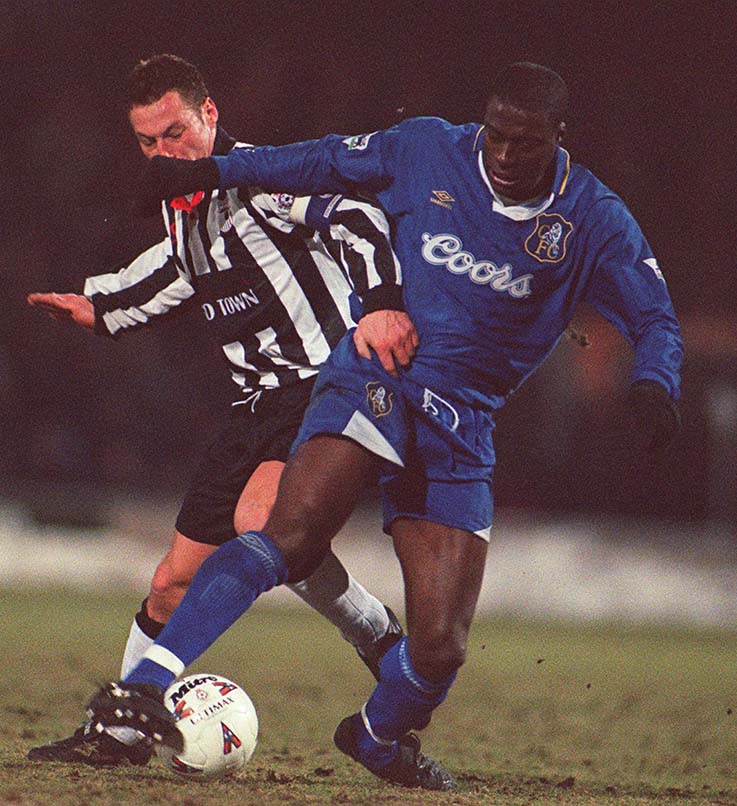
Also made memorable by the curly ‘Coors’ typography and yellow touches, if you close your eyes you can picture it hanging loosely off the torsos of the club’s first wave of top-class Premier League foreigners: Dan Petrescu, Franck Lebeouf, Roberto di Matteo and, er, Frode Grodas.
Away, 1994-96
Every club’s got one: a ‘so bad you’ll never forget it’ kit. But if you can’t be good, be memorable, and this one is permanently singed onto our retinas. Lots of orange, plenty of grey, a little blue, stripes of every direction and thickness, a nylon collar that chaffes and a shirt sponsor that is (probably happily) lost amid such carnage. Even Ruud Gullit couldn’t carry it off. Nuff said.
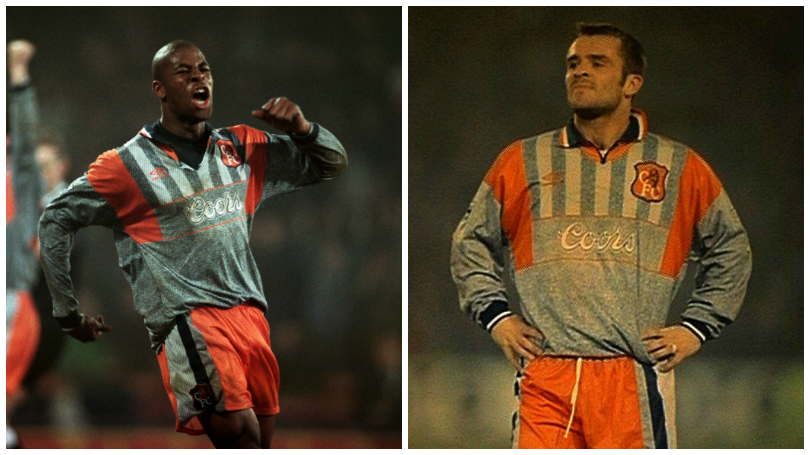
Home, 1987-89
After a brief flirtation with Gulf Air four years earlier, Chelsea lurched into full-time shirt sponsorship with this Commodore-emblazoned beauty (it was a computer your dad played on, kids). As well as going ‘double diamond’ – Umbro logo plus patterned shirt – the Blues sported some lovely splashes of red, including the middle stripe on a two-tone v-neck, and the red lion. Unfortunately, it couldn’t stop them being relegated in 1988.
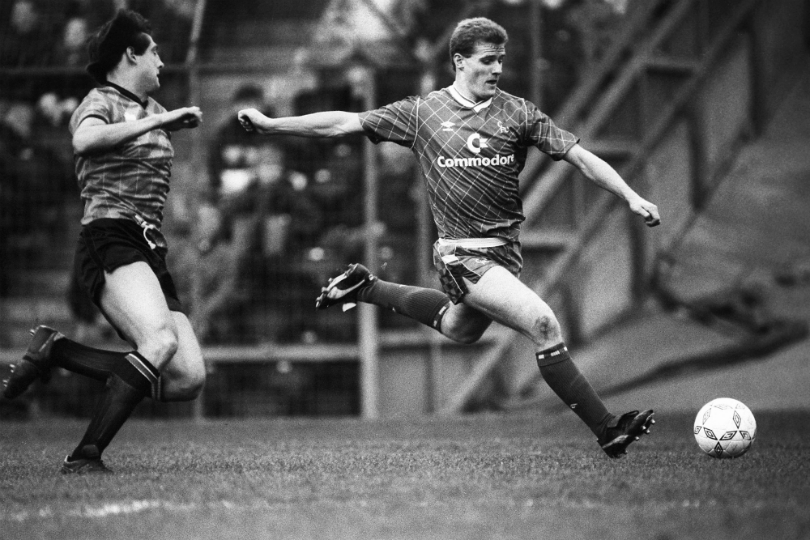
Goalkeeper, 1993-94
No list of great kits would be complete without mention of the man who has to wear one that’s different to everybody else’s. From the gloveless ‘Cat’, Peter Bonetti, in vintage green, to Petr Cech’s bright orange monstrosity in the noughties (designed to scare opposition strikers, according to big Pete) there have been some belters between the Stamford Bridge sticks.

But for his all-round look of tracksuit bottoms tucked into socks topped by a multi-coloured shattered glass effect, the honour goes to spring-heeled Russian, Dmitri Kharine, who shipped four goals dressed as described in the 1994 FA Cup Final. Ouch.
